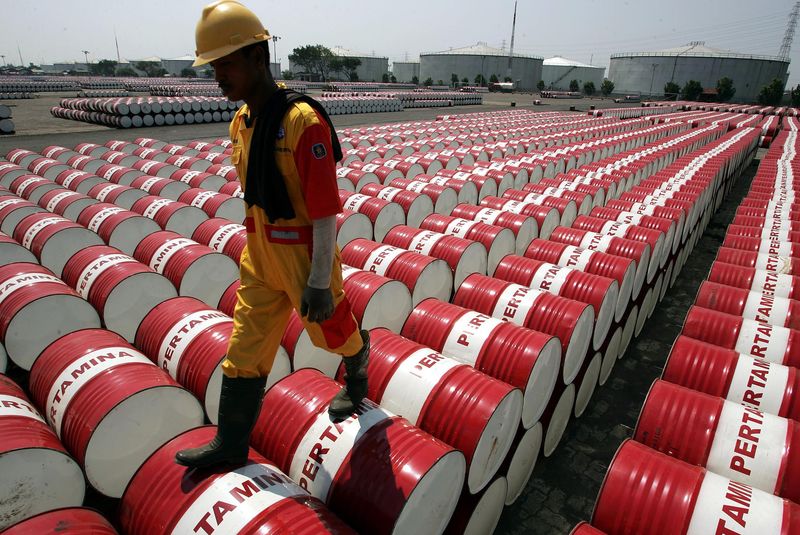Investing.com – West Texas Intermediate oil pared losses in North American trade on Thursday, despite data showed that oil supplies in the U.S. registered a larger-than-expected inventory build, in a week affected by the impact of Hurricane Harvey.
Crude oil for October delivery on the New York Mercantile Exchange fell 10 cents, or 0.20%, to trade at $49.06 a barrel by 11:03AM ET (16:03GMT) compared to $48.95 ahead of the report.
The U.S. Energy Information Administration said in its weekly report that crude oil inventories increased by 4.580 million barrels in the week ended September 1. Market analysts' had expected a crude-stock build of 4.022 million barrels, while the American Petroleum Institute late Wednesday reported a supply build of 2.791 million barrels.
Supplies at Cushing, Oklahoma, the key delivery point for Nymex crude, increased by 0.797 million barrels last week, the EIA said. Total U.S. crude oil inventories stood at 462.4 million barrels as of last week, according to press release, which the EIA considered to be “in the upper half of the average range for this time of year”.
The report also showed that gasoline inventories decreased by 3.199 million barrels, compared to expectations for a draw of 5.000 million barrels, while distillate stockpiles fell by 1.396 million barrels, compared to forecasts for a decrease of 3.063 million.
The report came out one day later than usual due to Monday’s Labor Day holiday.
Elsewhere, on the ICE Futures Exchange in London, Brent oil for November delivery turned around and gained 7 cents, or 0.13%, to $54.27 by 11:08AM ET (15:08GMT), compared to $54.16 before the release.
Meanwhile, Brent's premium to the WTI crude contract stood at $5.25 a barrel by 11:09AM ET (15:09GMT), compared to a gap of $5.04 by close of trade on Wednesday.
Elsewhere on Nymex, gasoline futures for October delivery fell less than a cent to $1.6721 a gallon, while October heating oil rose 1.7 cents to $1.7769 a gallon.
Natural gas futures for October delivery fell 1.8 cents to $2.982 per million British thermal units.
Markets have been evaluating the impact of Hurricane Harvey on supply and demand as operations in oil refineries, pipelines and shipping channels across Texas and Louisiana returned gradually this week.
Traders are also keeping an eye on Hurricane Irma, ranked as one of the five most powerful Atlantic hurricanes in the last 80 years.
The Category 5 hurricane battered Puerto Rico and devastated a chain of small Caribbean islands late on Wednesday and is expected to hit Florida by Sunday afternoon, a prospect that has roiled orange juice and gasoline futures markets as well as shares of insurance providers.
Two other tropical storms in the Atlantic, Jose and Katia, were declared hurricanes late on Wednesday.
